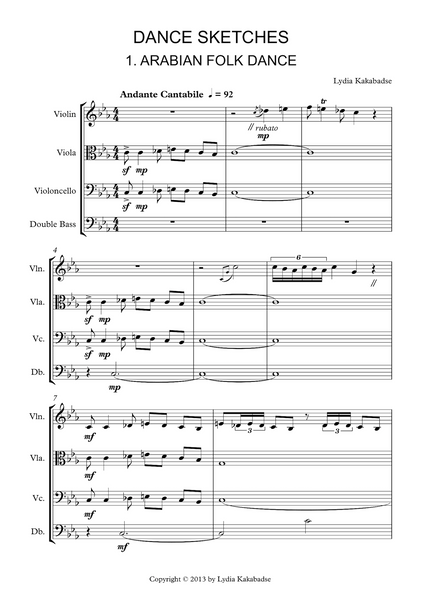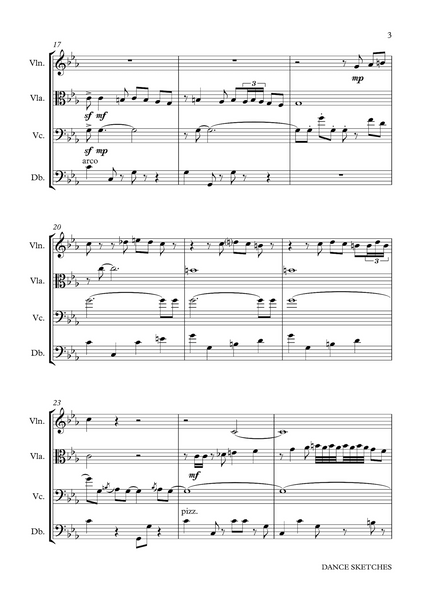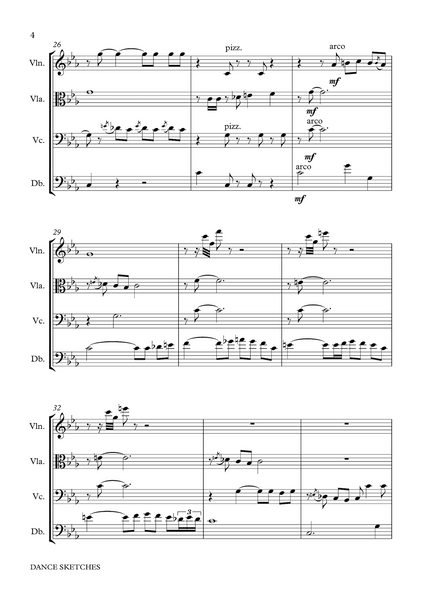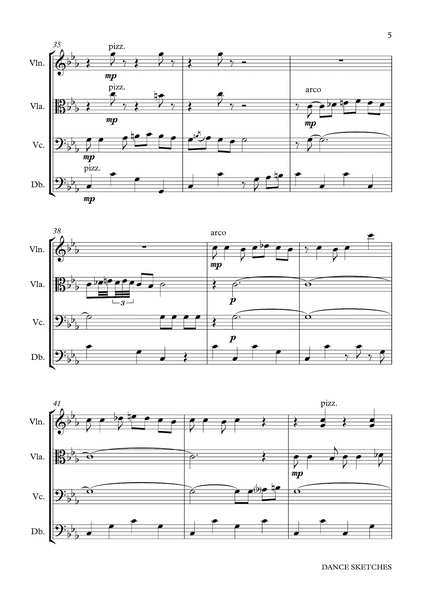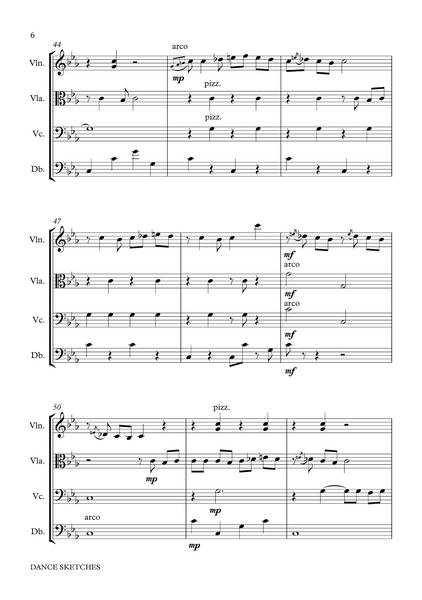Lydia Kakabadse: Dance Sketches – for “alternative” string quartet (NXP082)
This is a sheet music edition of Dance Sketches by the composer Lydia Kakabadse.
Sheet music for “alternative” string quartet (violin, viola, cello, double bass)
Duration: ca. 10 minutes
Score: 24 pages
Parts: 20 pages
Preface and Programme Notes
Inspired by my life-long love of dance, Dance Sketches is made up of three very diverse dances written in 2013 for violin, viola, cello and double bass.
1st movement – arabian folk dance
Written in a style suggestive of an Arabian folk dance, this movement is characterized by melody, embellishments, harmonic bareness, syncopated rhythms and use of the double harmonic scale (also known as the “Arabic scale”). Following an introduction marked by unison playing, a semi-quaver run by the viola in the double harmonic scale of C minor leads directly to the first theme, announced by the violin. The theme is then varied by the viola by means of embellishments and syncopated rhythms. A passage played by the bass in its high register links to a secondary theme, introduced first on the cello and then varied by the upper strings. Similar to the way it started, the movement ends with the viola and cello playing in unison.
2nd movement – stately court dance
Reminiscent of a 17th-century court dance gracing an aristocratic ballroom, the movement starts Andante maestoso and features syncopated slow-moving rhythmic patterns within a 4/4meter above a rich bass line. The tempo then quickens and the mood becomes lighter with more movement in the form of quaver passages. There is some dialogue between the lower and upper strings before the movement reverts back to the slower, stately dignified style. Played Grandioso, it combines a slow-moving syncopated rhythm on the violin with quaver movement in the lower strings.
3rd movement – dance of the clockwork toys
As the title suggests, this movement is quite staccato in character. The first of the clockwork toys comes to life at the outset as the violin announces the first theme. Other toys follow suit as the cello and bass play in tandem. A faster and more legato second theme, which heralds a lively (gigue-type) dance à deux, is introduced by the viola. This theme, accompanied by staccato pizzicato bass, is then taken up by the violin. Unable to maintain this fast pace, the toys start to wilt but order is restored for a short while with the reintroduction of the first theme. When a modified version of the second theme creeps in -played by the bass in its high register – it causes the dance to discontinue.







